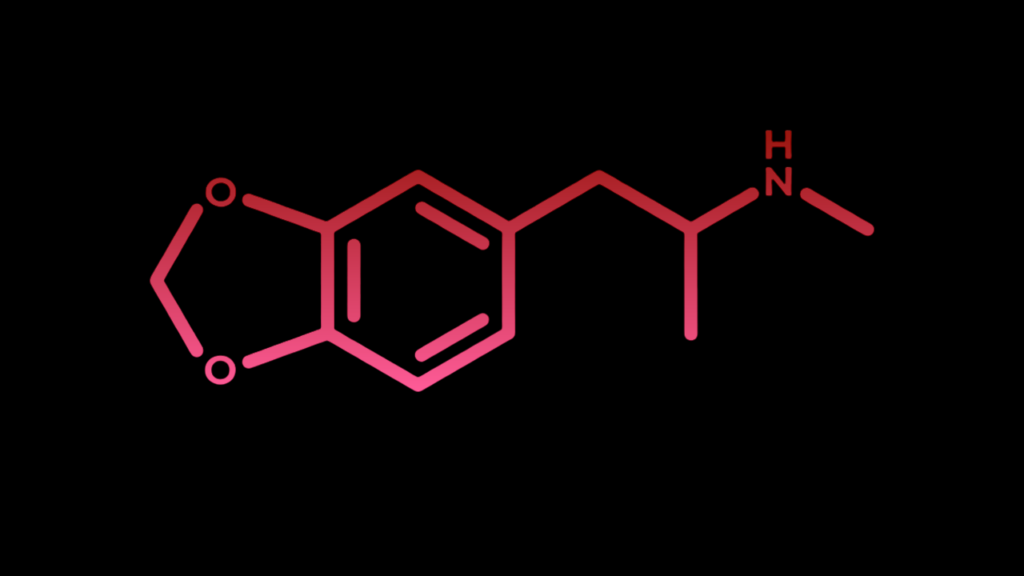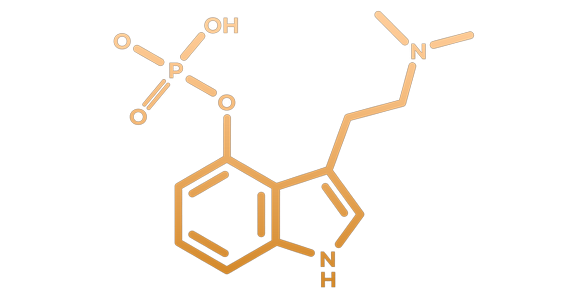Psychedelic therapy has received renewed attention in recent years, partly due to groundbreaking research into its therapeutic potential MDMA and psilocybin. Both agents uniquely open consciousness and can help process trauma, depression and anxiety. But how do these two agents actually differ in effect, experience and therapeutic effect? In this blog we will take you on an in-depth comparison between MDMA and psilocybin therapy — and how you can make the right choice at Trip Therapy.
What is MDMA?
MDMA, in full 3,4-Methylenedioxymethamphetamine, is a synthetic drug best known for its empathogenic effects. Developed in 1912, it found its way into psychotherapy in the 1970s and 1980s, with impressive results for PTSD, among other things. MDMA increases the release of serotonin, dopamine, and norepinephrine, leading to feelings of connectedness, openness, and inner peace. Crucially in a therapeutic context, MDMA suppresses fear responses in the amygdala, allowing trauma to be discussed without being overwhelmed. It creates a safe mental space to heal — without hallucinations or confusion.

What is psilocybin?
Psilocybin is a naturally occurring compound found in certain truffles and mushrooms. When ingested, psilocybin is converted in the body into psilocin — the chemical responsible for the psychedelic effect. Psilocybin strengthens the connections between different areas of the brain, leading to broader awareness and often deep spiritual insights. Truffle or psilocybin sessions often bring about visual hallucinations, a sense of unity and confrontation with the subconscious. It is therefore less verbal and more focused on inner experience and transformation.

MDMA vs. Psilocybin: The Key Differences
1. Emotional processing
MDMA reduces anxiety and increases trust — ideal for talk therapy. Psilocybin often brings out unfiltered emotions and invites us to feel them without verbal intervention.
2. Therapeutic approach
MDMA is most effective in trauma processing through words and guided conversations. Psilocybin is more suitable for meaning, depression and spiritual growth, where the inner journey is central.
3. Visual effects and experience
MDMA rarely causes hallucinations. Psilocybin, on the other hand, often produces intense visual and sensory experiences, similar to dreams. This can lead to meaningful insights, but also to temporary confusion or anxiety if there is no proper guidance.
4. Safety in case of mental health problems
MDMA is often better suited for people with severe PTSD, because it calms the fight-flight response. Psilocybin can be confrontational and is therefore less suitable for acute psychosis or unstable mood.
5. Duration and setting
Both drugs have a duration of action of approximately 4–6 hours, but MDMA is more often used with verbal therapy in a safe indoor space. Psilocybin sessions are sometimes also done outdoors or in a retreat format, with attention to the sensory experience.
A complete overview of these differences can be found in our explanation of the hippie flip combination of MDMA and psilocybin, in which the benefits of both agents are utilized in one session.
Who is MDMA therapy most suitable for?
In Trip Therapy, MDMA is often recommended for people with PTSD, anxiety disorders or emotional blockages. Also in relationship therapy with MDMA or psilocybin we see good results, mainly due to the increased empathy and openness during the session. Note: people with severe depression or suicidality should be screened well, because the 'comedown' can sometimes temporarily increase gloom.
Who is psilocybin therapy most suitable for?
Psilocybin has proven itself in treatment-resistant depression, existential anxiety in terminal illness, obsessive compulsiveness and addiction. Thanks to the deep, often mystical experience, clients can experience lasting changes in perspective and self-image. Recent research and sessions at Triptherapie show that this form of therapy works especially when talking no longer offers a solution.
What if you can't choose?
Sometimes it's the combination — the so-called hippie flip — that provides the most insight and healing. These sessions, using psilocybin and MDMA together, provide the visual depth of psilocybin with the sense of safety of MDMA. Scientific research has shown that this type of session creates more self-compassion and reduces the chance of a bad trip.
Integration: The real work begins after the trip
Regardless of your choice, the integration process is crucial. Let us help you with aftercare, lifestyle plan and integration talks. Our approach is focused on lasting behavioral change and psychological growth, not just the experience itself.
Conclusion
MDMA and psilocybin therapy are two different paths to the same goal: healing, insight and personal growth. At Triptherapie we guide you in making the right choice, tailored to your situation. Fill in the intake and discover which tool and session format best suits your process.
Whether you choose an introspective truffle session, an MDMA session, or a profound combination: psychedelic therapy can be the catalyst for a new phase in life.
